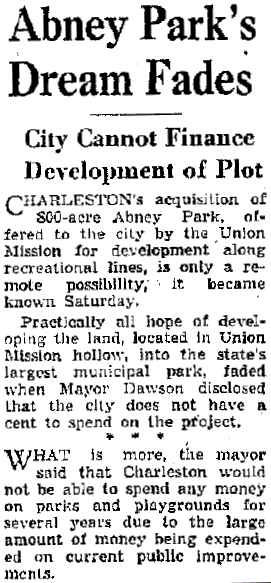ABNEY PARK The most famous Park that never was 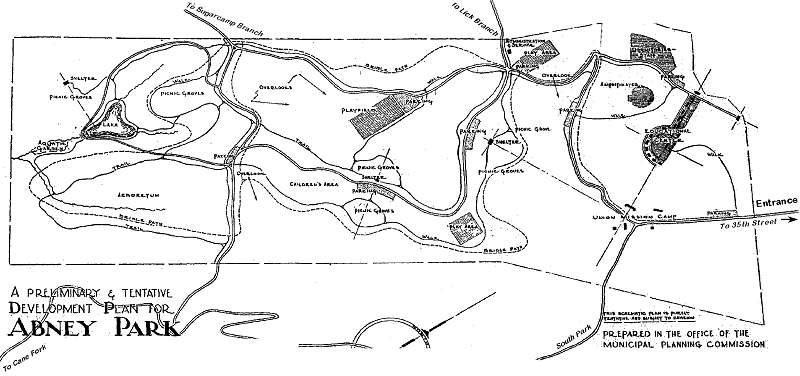
This
map shows the plan for Abney Park in Kanawha City, (which in fact
WAS a park for many years, but mostly undeveloped) on what is now South
Park Road and the site of the Union Mission Settlement. See
larger map HERE
|
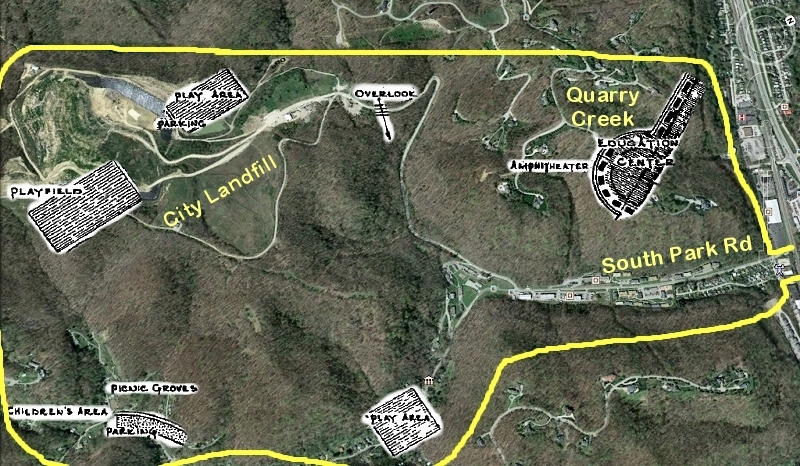
I have superimposed some of the features from the top map onto this one, to show approximately where the planned features would be located. The yellow line shows the approximate park boundary line, which consisted of over 800 acres.
|
The story of Abney Park is both interesting and sad.
The Union Mission ( a rescue Mission) was founded by Pat Withrow, a self proclaimed sinner and preacher.
The
purpose and cause of the Union Mission must have been very powerful,
because look at the names of it's benefactors and supporters,
especially the Abney family, John Q Dickinson and Col Albert Humphreys.
"GIVEN AN 800 ACRE PARK"?
Lets look further...
|
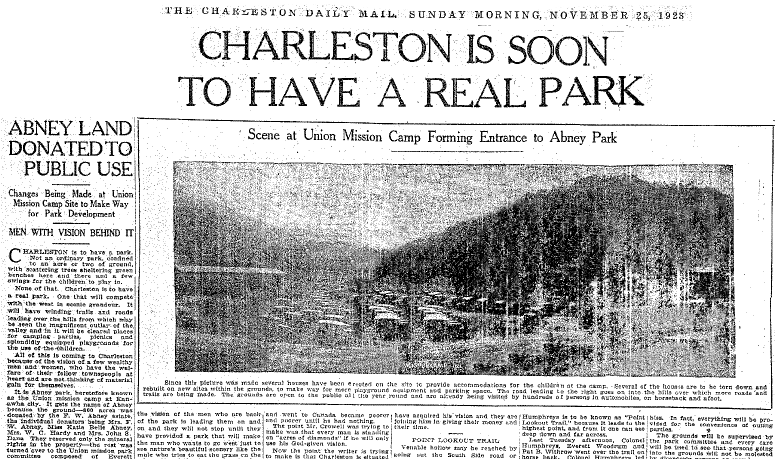
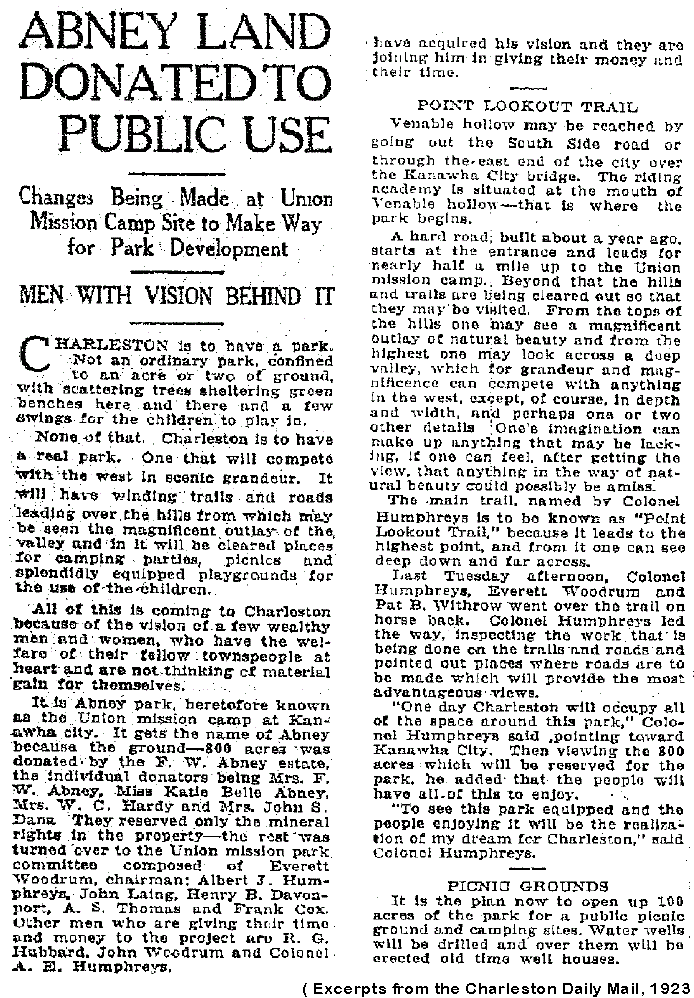
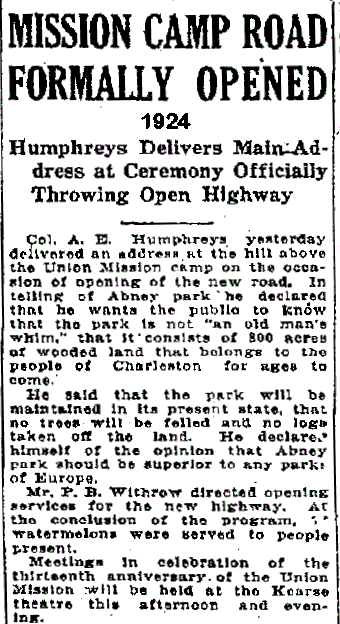 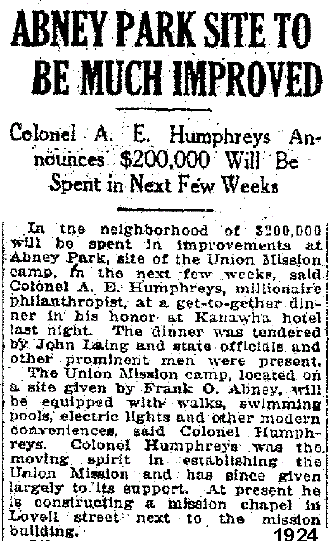 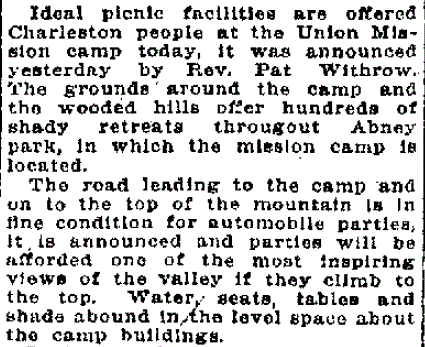 Yes, the road to the top (about where the Landfill is today) was opened and traveled even in 1925. Yes, the road to the top (about where the Landfill is today) was opened and traveled even in 1925.
But something happened that same year:
| What
is was is not clear as of this writing, but I hope to discover why Col
Humphreys decided not to spend what today would be the equivalent of
$1,5 million dollars to improve the park. |
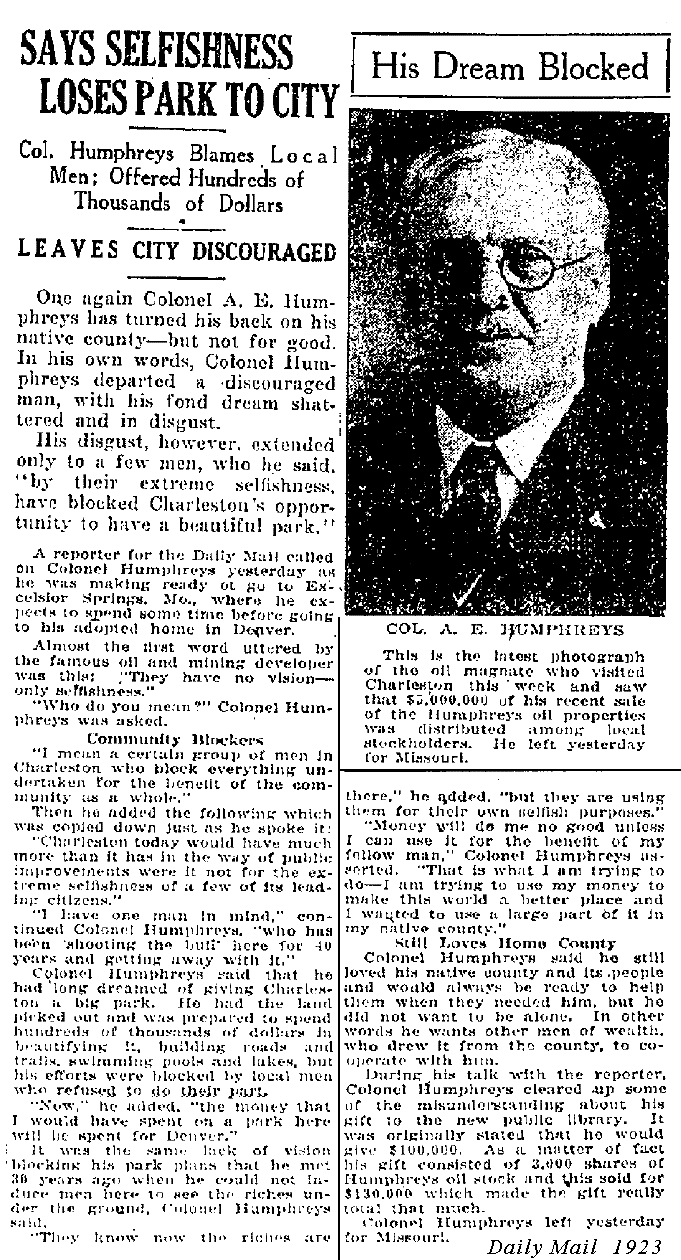 |
Who was Frank W. Abney?Francis
Worth Abney was regarded as one of the leading financiers of West
Virginia. His business interests are very extensive, and he is or has
been connected with almost every important enterprise in the city.
Mr. Abney was born in Bossier parish, Louisiana, his father dying in comparatively early life.
Mr.
Abney was educated at Washington and Lee University, Lexington,
Virginia. For some years he was associated as partner with Colonel
Morgan Jones, the well-known railroad man of the Southwest, now of Fort
Worth, Texas, the business of the firm being that of railroad
contractors. He was the first president of the Charleston,
Clendenin & Sutton Railway (later the Coal & Coke Railroad),
which he organized and partly built.
In 1876 Mr. Abney
settled in Charleston, West Virginia, becoming associated in business
with his father-in-law, Mr. Enos Arnold. In the following year they
started a small wholesale dry goods business under the style of Arnold
& Abney, which grew rapidly and soon commanded a prosperous trade.
In 1887 Mr. E. A. Barnes entered the firm, which then became Arnold,
Abney & Company, and so continued until 1900, when Mr. W. O. Abney
and Mr. A. S. Thomas became associated with the business as junior
partners, the style of the firm then being changed to Abney, Barnes
& Company. By this time the business had grown until the sales
amounted to about $800,000 annually. In 1906 Mr. Abney retired from the
business to become president of the Charleston-Kanawha Trust Company,
of which he was the organizer. In 1910 he reorganized this
company and materially increased its capital. This company did a very
considerable business in financing new enterprises, including coal,
oil, gas, timber and land companies, and has been very successful.
When
the Union Trust Company of Charleston was organized, in 1913. Mr. Abney
was chosen as its president. The Union Trust Company owns and occupies
one of the finest bank and office buildings in the state, a thoroughly
modern and imposing structure of thirteen stories, at the junction
of Kanawha and Capitol streets, in Charleston. In addition,
Mr. Abney was president of the Charleston Manufacturing Company,
a director in the Charleston Industrial Corporation at Nitro, and had oil and coal holdings.
Mr.
Abney married Kate V. Arnold, who was born in Charleston, and was the
daughter of Enos and Cynthia Noyes Arnold. Mrs. Abney died in
July, 1910. |
I leave you with this funny story of Abney Park in 1929

|
This page is still under construction. Additions and corrections will be made as it progresses.Back to Index |


